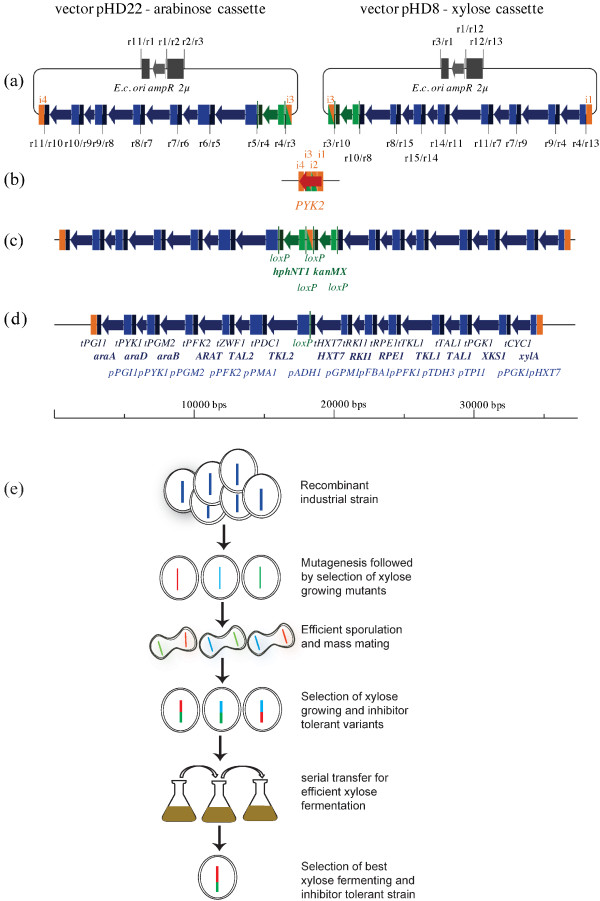Figure 1.
General strategy used for development of a strain with high xylose fermentation capacity and high inhibitor tolerance. (a) to (d): Scheme of the designed plasmids and the integration of the cassettes into the pyk2 allele of the Ethanol Red strain. (a) Vectors carrying the expression cassettes for xylose and arabinose utilization; (b) scheme of wild type PYK2 locus; (c) scheme of pyk2 locus with integrated arabinose- and xylose-utilization cassettes; (d) locus after loxP-Cre mediated recombination displaying the genotype of the strain HDY.GUF5. Non-integratable parts of the plasmids are colored in gray, parts where the homologous recombination took place in orange (numbered i1 - i4), the integrative cassette in blue, and the green color symbolizes parts of the cassette which can pop out by loxP-Cre mdiated recombination. Restriction sites: r1 - StuI; r2 - NheI; r3 - SbfI; r4 - Bsu36I; r5 - NarI; r6 - AvrII; r7 - AscI; r8 - BamHI; r9 - NotI; r10 - PmeI; r11 - XmaI; r12 - AatII; r13 - BstZ17I; r14 - SapI; r15 - PshAI. (e) Evolutionary engineering strategy. The diploid recombinant industrial strain was mutagenized and mutant strains able to grow on xylose were selected. Their genome was shuffled by sporulation and mass mating, and the best D-xylose utilizers selected in D-xylose-enriched pre-treated spruce hydrolysate. The culture was then submitted to evolutionary adaptation in YP + 40 g/L D-xylose, single clones were evaluated in different stages and the strain with the best performance selected from the last stage.

